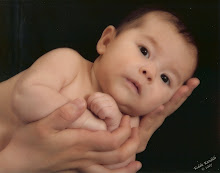Kawasaki disease is an illness that involves the skin, mouth, and lymph nodes, and most often affects kids under age 5. The cause is unknown, but if the symptoms are recognized early, kids with Kawasaki disease can fully recover within a few days. Untreated, it can lead to serious complications that can affect the heart.
Kawasaki disease occurs in 19 out of every 100,000 kids in the United States. It is most common among children of Japanese and Korean descent, but can affect all ethnic groups.
Signs and Symptoms
Kawasaki disease can't be prevented, but usually has telltale symptoms and signs that appear in phases.
The first phase, which can last for up to 2 weeks, usually involves a persistent fever higher than 104° Fahrenheit (39° Celsius) and lasts for at least 5 days.
Other symptoms that typically develop include:
severe redness in the eyes
a rash on the stomach, chest, and genitals
red, dry, cracked lips
swollen tongue with a white coating and big red bumps
sore, irritated throat
swollen palms of the hands and soles of the feet with a purple-red color
swollen lymph nodes
During the second phase, which usually begins within 2 weeks of when the fever started, the skin on the hands and feet may begin to peel in large pieces. The child also may experience joint pain, diarrhea, vomiting, or abdominal pain. If your child shows any of these symptoms, call your doctor.
Complications
Doctors can manage the symptoms of Kawasaki disease if they catch it early. Symptoms often disappear within just 2 days of the start of treatment. If Kawasaki disease is treated within 10 days of the onset of symptoms, heart problems usually do not develop.
Cases that go untreated can lead to more serious complications, such as vasculitis, an inflammation of the blood vessels. This can be particularly dangerous because it can affect the coronary arteries, which supply blood to the heart.
In addition to the coronary arteries, the heart muscle, lining, valves, and the outer membrane that surrounds the heart can become inflamed. Arrhythmias (changes in the normal pattern of the heartbeat) or abnormal functioning of some heart valves also can occur.
Diagnosis
No one test can detect Kawasaki disease, so doctors usually diagnose it by evaluating the symptoms and ruling out other conditions.
Most kids diagnosed with Kawasaki disease will have a fever lasting 5 or more days and at least four of these symptoms:
redness in both eyes
changes around the lips, tongue, or mouth
changes in the fingers and toes, such as swelling, discoloration, or peeling
a rash in the trunk or genital area
a large swollen lymph node in the neck
red, swollen palms of hands and soles of feet
If Kawasaki disease is suspected, the doctor may order tests to monitor heart function (such as an echocardiogram) and might take blood and urine samples to rule out other conditions, such as scarlet fever, measles, Rocky Mountain spotted fever, juvenile rheumatoid arthritis, or an allergic drug reaction.
Treatment
Treatment should begin as soon as possible, ideally within 10 days of when the fever begins. Usually, a child is treated with intravenous doses of gamma globulin (purified antibodies), an ingredient of blood that helps the body fight infection. The child also might be given a high dose of aspirin to reduce the risk of heart problems.



































